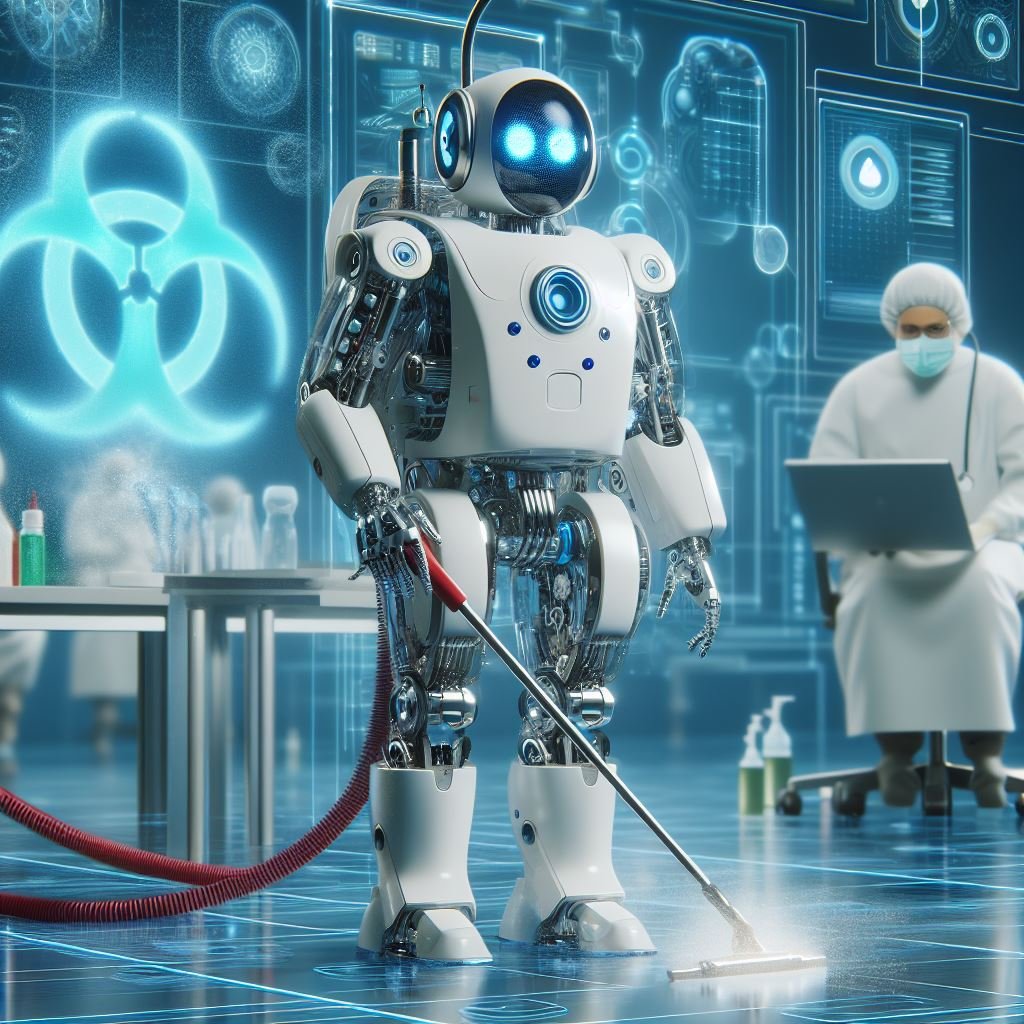In the wake of global health crises, such as the COVID-19 pandemic, the role of disinfecting robots has gained significant attention. These robots play a crucial role in maintaining cleanliness and preventing the spread of pathogens in various environments, including hospitals, schools, and public spaces. However, beyond their technical capabilities, the design and implementation of disinfecting robots raise important ethical considerations, particularly concerning care ethics. In this article, we explore the intersection of disinfecting robots, care ethics, and design, emphasizing the importance of fostering empathy, responsibility, and inclusivity in the development of these technologies for a healthier future.
Disinfecting Robots: A Vital Tool in Public Health
Disinfecting robots represent a revolutionary approach to maintaining hygiene and preventing the transmission of infectious diseases. Equipped with advanced sensors, UV-C lights, or chemical sprayers, these robots can autonomously navigate indoor spaces and eliminate harmful pathogens on surfaces, reducing the risk of contamination and infection. From hospitals and airports to offices and shopping malls, disinfecting robots offer a scalable and efficient solution for ensuring cleanliness and safety in high-traffic environments.
Ethical Dimensions of Disinfecting Robots
While the benefits of disinfecting robots are evident, their deployment raises ethical considerations that must be addressed to ensure responsible and equitable use.
1. Care Ethics and Responsibility
At the heart of care ethics is the recognition of interdependence and the moral obligation to care for others. In the context of disinfecting robots, care ethics necessitates a holistic approach that considers the well-being of both users and the broader community. This involves not only ensuring the effectiveness of disinfection procedures but also prioritizing user safety, privacy, and dignity. Additionally, developers and manufacturers bear a responsibility to design robots that minimize environmental impact and promote sustainability, reflecting a commitment to care for the planet and future generations.
2. Inclusivity and Accessibility
Disinfecting robots should be designed with inclusivity and accessibility in mind to ensure equitable access and participation for all individuals, regardless of age, ability, or socioeconomic status. This requires considering diverse user needs and preferences, as well as addressing potential barriers to adoption, such as language barriers, cultural differences, and technological literacy. By embracing principles of universal design and accessibility, disinfecting robots can maximize their impact and benefit a broader range of users, including marginalized and vulnerable populations.
3. Ethical Use of Data
The deployment of disinfecting robots raises concerns about data privacy and security, particularly regarding the collection and utilization of sensitive information, such as location data and personal health records. Careful consideration must be given to data governance frameworks, transparency measures, and user consent mechanisms to protect individual privacy rights and mitigate the risk of data breaches or misuse. Moreover, ethical guidelines should be established to govern the responsible use and sharing of data collected by disinfecting robots, ensuring accountability and trustworthiness in their operation.
Designing Ethical Disinfecting Robots
Incorporating care ethics into the design and implementation of disinfecting robots is essential for promoting responsible and sustainable deployment.
1. User-Centered Design
User-centered design approaches prioritize the needs, preferences, and experiences of end-users throughout the design process. In the context of disinfecting robots, this involves conducting thorough user research to understand user requirements, contexts of use, and potential ethical concerns. By involving diverse stakeholders, including healthcare professionals, facility managers, and members of the community, designers can co-create solutions that address real-world challenges and foster empathy and inclusivity.
2. Ethical Considerations in Technology Development
Technology developers have a responsibility to integrate ethical considerations into the design and development of disinfecting robots from the outset. This includes embedding privacy-by-design principles into the robotics architecture, implementing robust cybersecurity measures, and adhering to ethical guidelines and standards, such as the IEEE Global Initiative for Ethical Considerations in Artificial Intelligence and Autonomous Systems. Additionally, developers should conduct rigorous testing and validation processes to ensure the safety, reliability, and effectiveness of disinfecting robots in diverse operating environments.
3. Continuous Evaluation and Improvement
Ethical design is an ongoing process that requires continuous evaluation and improvement based on user feedback, emerging technologies, and evolving ethical norms. Designers and stakeholders should establish mechanisms for monitoring the performance and impact of disinfecting robots, soliciting input from users and communities, and iterating on design solutions to address emerging ethical challenges and opportunities. By fostering a culture of reflection, learning, and adaptation, designers can ensure that disinfecting robots remain aligned with ethical principles and contribute to positive social outcomes over time.
Conclusion
Disinfecting robots have emerged as powerful tools for safeguarding public health and hygiene in the face of infectious diseases. However, their design and deployment must be guided by ethical considerations rooted in care ethics to ensure responsible and inclusive use. By prioritizing empathy, responsibility, and inclusivity in the design process, developers can create disinfecting robots that not only effectively combat pathogens but also promote human dignity, equity, and well-being. As we navigate the complexities of public health crises and technological advancements, the integration of care ethics into robotics design is essential for building a healthier and more resilient future for all.
#DisinfectingRobots #CareEthics #RobotDesign #PublicHealth #EthicalTechnology #HealthcareInnovation #RoboticsEthics #InclusiveDesign #HealthTech #RobotSafety #DataPrivacy #UserCenteredDesign #EthicalAI #InfectionControl #TechResponsibility #CommunityWellBeing #HumanDignity #Sustainability #UniversalDesign #PrivacyProtection #DataSecurity #EthicalDevelopment #TechInclusivity #HealthcareAccessibility #EthicalFrameworks #FutureOfHealthcare #TechForGood #amoltechnicalguru

